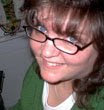Okay, we covered first person. Let's swing to the other side of the spectrum to third person omniscient. This is where we know everything every person is thinking - sometimes we even know what a whole group of people are thinking! Omniscient point of view reached its most extreme form in nineteenth-century novels such as George Eliot's "Middlemarch." At one point, the author pauses the action and addresses the reader directly:
If you want to know more particularly how Mary look, ten to one you will see a face like hers in the crowded street tomorrow, if you are there on the watch: she will not be among those daughters of Zion who are haughty, and walk with stretched-out necks and wanton eyes, mincing as they go. Let all those pass, and fix your eyes on some small plump brownish person of firm but quiet carriage, who looks about her, but does not suppose that anyone is looking at her.
Browne and King say you're unlikely to want to go as far as this - it's difficult to maintain transparency when you're having a chat with your readers - but the omniscient point of view in its milder forms does have its uses. But what you gain in perspective you lose in intimacy.
Omniscient POV also tends to narrate. The author pulls back from the action and describes the surroundings or gives us an "info dump." We'll talk about info dump later, but it's just what it implies - a paragraph of information the writer wants to make sure the reader knows about.
Omniscient POV is also called "head hopping." Here's an example:
Lucas grabbed the ball away from Sam. He never liked sharing and he liked Sam even less. Sam wanted to teach Lucas a lesson, so he pushed Lucas on the ground. Alice hated fighting. "Stop!" she yelled. "You're only going to hurt each other."
Lucas and Sam ignored Alice's cries and began pummeling each other with their fists. The ball lay ignored on the ground.
So you see how we knew what each character was thinking or how they felt? Who was the main character? Whose story is it? You can't tell because I was equally in everyone's point of view. I even threw some narration in there. That can be distracting for some readers.
Fantasy writers often use omniscient POV. Fantasy kind of lends itself to it. However, in all the workshops and conferences I've attended, every single editor and agent has said to never, EVER use omniscient POV. Do not head hop, they said. Stay in ONE point of view. This is one of the writing rules. But I've also heard once you master the rules, you can break them, if you break them creatively.
Every manuscript I've read from a beginning writer or a self-published writer has been in omniscient POV. It's hard to stay in one point of view. I believe omniscient POV has its place, but I also believe working to learn to stay in one POV at a time strengthens your writing. So, can you identify your point of view? Give us an example of omniscient POV, if you write there. And let's talk about how we feel about this point of view. We'll talk about good old, regular third person POV next time.
Don't Plant Trees!
11 years ago







I started off writing this way until someone was kind enough to show me the error of my ways. Moving to Third-Person limited really does help to strengthen the story.
ReplyDeleteGlad to see another supporter of Christian Fantasy. Keep up the good work!
Thanks, James! Stop by again!
ReplyDeleteThanks! It really helped with school! I'll come back for more!
ReplyDeleteI'm so glad!
ReplyDelete